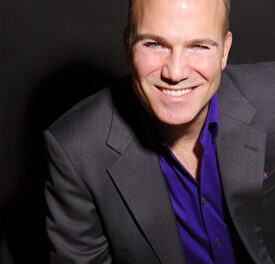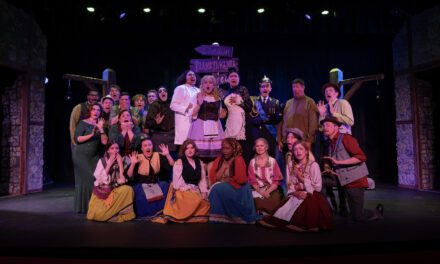There were, understandably and by design, some strong parallels between last week’s Raleigh Civic Symphony concert – for review click here – and this concert by the Raleigh Civic Chamber Orchestra. There were also some perhaps inadvertent parallels between this concert and the one that took place in Chapel Hill the night before – click here.
The latter, first. The RCCO’s program consisted of some early 20th-century music – Griffes’ “The White Peacock” and four excerpts from Walton’s Façade, both of which post-dated the opening work on UNC’s concert – and some new music by J. Mark Scearce, head of NCSU’s music department. There was a premiere – of a not-previously-heard song from roughly a quarter of a century ago – and of the orchestral garb in which it and four other, slightly earlier songs, originally for tenor and piano, were now clad. (At UNC, there were two sort-of premieres of music by two different composers and a revival of a third “new” work by the conductor of the other two….)
In Stewart Theatre, at NCSU, the Raleigh Civic Symphony Association’s Chamber Orchestra has in all candor never sounded better. Its performance of the quasi-romantic but in fact decidedly impressionistic “White Peacock” sounded more French than Debussy’s famous “Prelude to the Afternoon of a Faun” often does; astute readers will know that means potential trouble in the execution of the often-transparent and spare orchestral parts, but on this occasion conductor Randolph Foy and his musicians came through with flying colors, delivering the magical score with virtually no apparent blemishes. It was, in a word, breath-taking.
(Keeping to the program’s theme, the portions of the William Sharp poem that inspired the Griffes were included in the printed booklet.)
Scearce’s early work, Mourning Songs, with texts by his brother Michael J. Scearce, was performed by tenor Wade Henderson and a 10-person ensemble of winds, strings and harp. The French horn – the composer’s own instrument – enjoyed considerable prominence, and the harp was a welcome and engaging presence. (These artists were Bill McHenry and Jacqueline Bartlett, respectively.) Henderson’s diction is so good the texts in the program were hardly needed, and Scearce is such a fine composer it was possible to hear and savor every word. In addition, the texts were wrapped in music that significantly enhanced both meaning and emotion, resulting in a short cycle that was immensely satisfying. The songs are mostly nostalgic and often dark, but there is a “life-goes-on” sense as they unfold. The response was warm and heartfelt.
There followed the four Façade bits, with Edith Sitwell’s poems recited by NCSU’s fine choral person, Nathan Leaf. The afternoon’s jolt was the size of the accompanying ensemble – virtually the whole chamber orchestra – and an amplified Leaf – too much volume, most of the time. Still, all the words were clear – yes, even the rush of words in the concluding “Tango-Pasodoble,” and it was good to hear a bit of the engaging piece again, for it’s been a number of years since the last complete local performance. One suspects that new listeners may have found it baffling, but it, too, fit into the context of the afternoon’s program.
The grand finale was Scearce’s The Thread, a setting of Toni Morrison’s 9/11 poem, The Dead of September 11. “Setting” is probably not the operative word, for what Scearce has done with his extraordinary music is transform the poem into a new work of art that is greater by far than just the words or just the music would be by themselves. It helped that two superb solo artists were on hand – violinist Brian Reagin, concertmaster of the NC Symphony, and mezzo-soprano Karyn Friedman, whose realization – embodiment, in truth – of the vocal part was one of the most moving things heard hereabouts in years. The solo violin set the perfect mood of hushed tranquility at the outset – it reminded me of that serene passage in the Benedictus of Beethoven’s Missa Solemnis – and then continued to contribute commentary, as it were, that consistently went beyond what mere words, even sung words, could express. In this piece, we revisit the agony of 9/11 but are ultimately wrapped in the arms of death, as were the victims of the attacks, before we – and, we trust, they – are set free. There must of course be hope – as the opening work on UNC’s concert the previous day (“Peace on Earth”) had also reminded us. In The Thread, Morrison’s words, Scearce’s powerful and often riveting music, and the polished playing by the Raleigh Civic Chamber Orchestra, capped by Friedman and Reagin’s solo contributions, left us briefly immobile at the end, pondering for ourselves the impact of what we’d heard, the reflection of what we’d all experienced, collectively, just a little over nine years ago. There can be no higher purpose of art than to hold up mirrors to our own souls.












